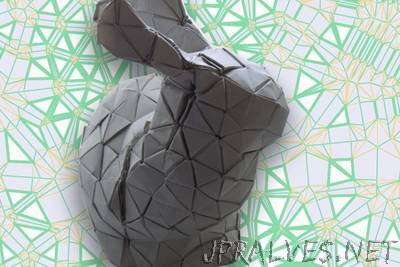
“In a 1999 paper, Erik Demaine — now an MIT professor of electrical engineering and computer science, but then an 18-year-old PhD student at the University of Waterloo, in Canada — described an algorithm that could determine how to fold a piece of paper into any conceivable 3-D shape. It was a milestone paper in the field of computational origami, but the algorithm didn’t yield very practical folding patterns. Essentially, it took a very long strip of paper and wound it into the desired shape. The resulting structures tended to have lots of seams where the strip doubled back on itself, so they weren’t very sturdy. At the Symposium on Computational Geometry in July, Demaine and Tomohiro Tachi of the University of Tokyo will announce the completion of a quest that began with that 1999 paper: a universal algorithm for folding origami shapes that guarantees a minimum number of seams.”
